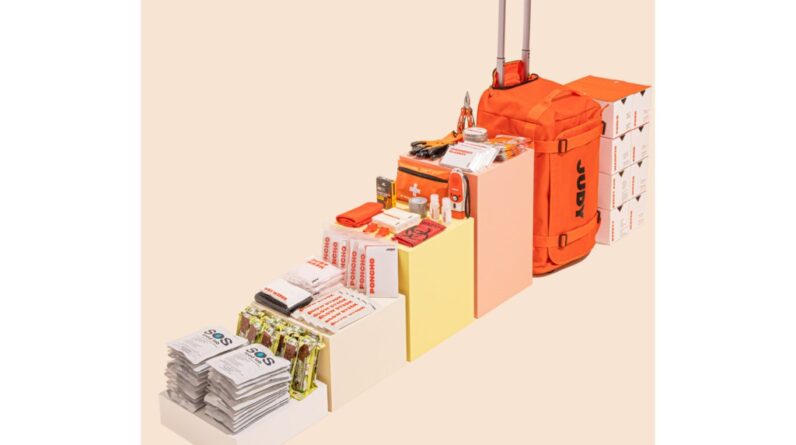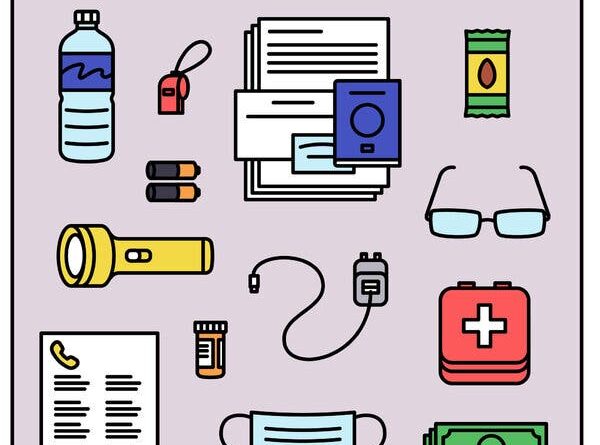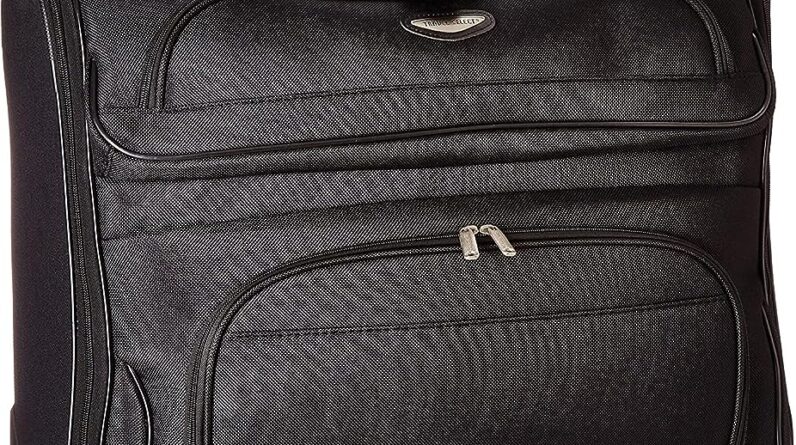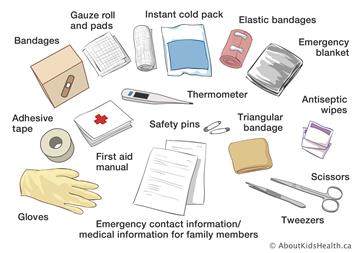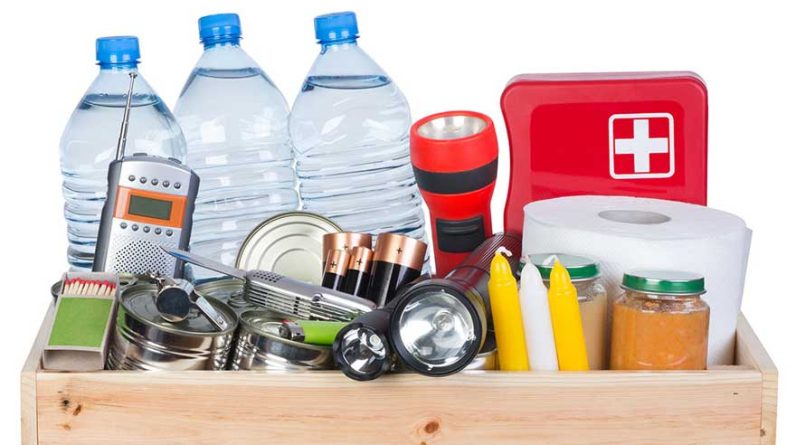
In this article, you will gain valuable insights into the shelf life of emergency kit food and water. Have you ever wondered how long the supplies in your emergency kit will last? Understanding the duration of these crucial resources is vital for ensuring your preparedness in times of crisis. By delving into this topic, we will explore the factors that impact the shelf life and provide you with essential information to help you make informed decisions about your emergency supplies. So, let’s dive in and unravel the mysteries behind the duration of emergency kit food and water!
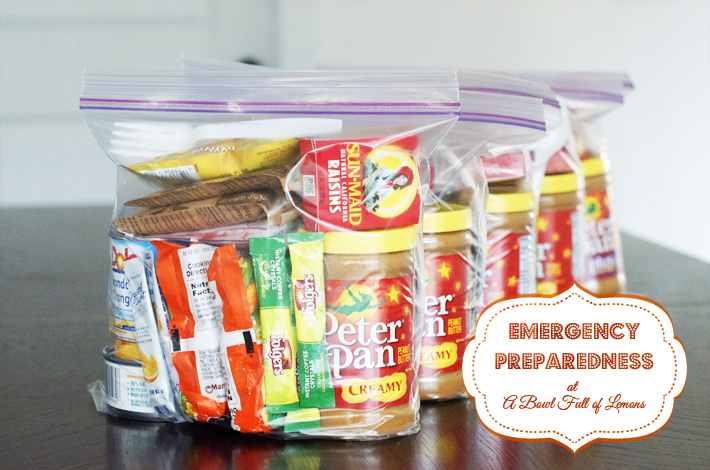
This image is property of www.abowlfulloflemons.net.
Factors Affecting the Shelf Life of Emergency Kit Food
Packaging
The packaging of emergency kit food plays a crucial role in determining its shelf life. Proper packaging helps to protect the food from external factors such as moisture, air, and light, which can degrade its quality over time. Many emergency kit foods come in sealed pouches or containers that are designed to prevent any oxygen exposure and keep the food fresh for an extended period.
Storage Conditions
The storage conditions of emergency kit food can greatly impact its shelf life. It is important to store the food in a cool, dry, and dark place to minimize the deterioration of quality. Exposure to heat, humidity, and light can accelerate the spoilage process and decrease the longevity of the food.
Temperature
Temperature is a critical factor that affects the shelf life of emergency kit food. Extreme temperatures, both hot and cold, can have detrimental effects on the quality and safety of the food. High temperatures can cause bacterial growth and speed up the rate of spoilage, while freezing temperatures can lead to texture changes and loss of nutritional value.
Humidity
Humidity levels also play a role in determining the shelf life of emergency kit food. Excessive humidity can promote the growth of mold and bacteria, leading to food spoilage. It is important to keep the food storage area dry and well-ventilated to prevent moisture buildup and ensure the longevity of the emergency kit food.
Light
Exposure to light, especially sunlight, can negatively impact the shelf life of emergency kit food. Ultraviolet (UV) rays from sunlight can cause chemical reactions in the food, leading to changes in texture, color, and flavor. To preserve the quality of the food, it is advisable to store it in opaque containers or in a covered area away from direct light.
Oxygen Exposure
Oxygen exposure can significantly shorten the shelf life of emergency kit food. Oxygen can promote the growth of microorganisms and cause oxidative reactions, leading to spoilage. Proper packaging with oxygen barriers, such as vacuum-sealed pouches or cans, can help to extend the shelf life by preventing oxygen from reaching the food.
Types of Emergency Kit Food
Dried Foods
Dried foods, such as dehydrated fruits, vegetables, meats, and grains, are popular choices for emergency kit food. The dehydration process removes the water content from the food, which helps to inhibit the growth of bacteria and fungi. Dried foods have a longer shelf life compared to other types of emergency kit food and are lightweight and easy to store.
Canned Foods
Canned foods are another common option for emergency kits. The canning process involves sealing food in airtight containers and sterilizing them through heat treatment. This process helps to prevent microbial growth and preserve the quality of the food. Canned foods have a relatively long shelf life and are convenient for emergency situations.
MREs (Meals Ready to Eat)
MREs, or Meals Ready to Eat, are complete meals packaged in individual pouches. They are designed to be easily consumed in emergency situations and often include a main course, side dishes, snacks, and beverages. MREs have a shelf life of several years and are a popular choice for their convenience and nutritional value.
Energy Bars
Energy bars are compact, high-calorie food bars that are specifically formulated to provide quick and efficient energy. They are often made with a combination of carbohydrates, proteins, and fats to sustain energy levels during emergencies. Energy bars typically have a shelf life of several months to a year, depending on the brand and ingredients.
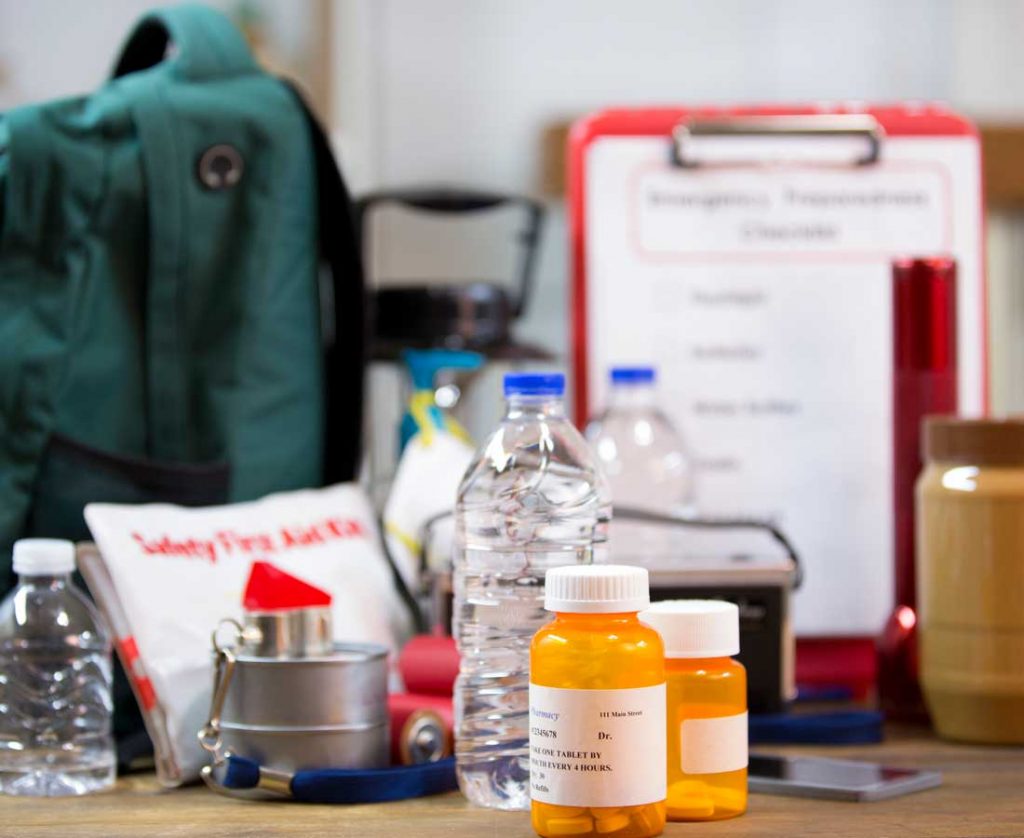
This image is property of media.healthyfood.com.
Shelf Life of Emergency Kit Food
Dried Foods
The shelf life of dried foods can vary depending on the specific type and storage conditions. Generally, properly stored dried foods can last anywhere from 6 months to several years. It is important to check the expiration dates on the packaging and rotate the food regularly to ensure freshness and quality.
Canned Foods
Canned foods have a longer shelf life compared to other types of emergency kit food. Most canned foods can last for 2 to 5 years when stored in a cool and dry place. However, it is important to check for any signs of damage or bulging cans before consuming them, as this can indicate spoilage or contamination.
MREs
MREs typically have a shelf life of around 3 to 5 years when stored in the recommended conditions. However, it is essential to check the expiration dates on the packaging and rotate the MREs regularly to ensure that you always have fresh and safe meals in your emergency kit.
Energy Bars
The shelf life of energy bars can vary depending on the brand and ingredients. Most energy bars have a shelf life of 6 months to 1 year, but it is crucial to check the expiration dates and consume them before they expire. Regularly inspecting the bars for any signs of spoilage, such as mold or off odors, is also recommended.
Rotation and Expiration Dates
To ensure the freshness and quality of emergency kit food, it is important to practice a rotation system. This involves regularly consuming and replacing older food items with fresh ones. Keeping track of expiration dates and adhering to them will help to maintain a well-equipped emergency kit with food that is safe to consume.
Factors Affecting the Shelf Life of Emergency Kit Water
Container Material
The material of the container used to store emergency kit water can affect its shelf life. Containers made of durable and BPA-free materials, such as high-density polyethylene (HDPE), are recommended for long-term storage. These containers are less likely to leach harmful chemicals into the water and provide better protection against external factors.
Water Source
The source of the emergency kit water can also impact its shelf life. It is important to start with clean and safe drinking water from a reliable source. If collecting water from natural sources, such as rivers or streams, it is essential to properly treat and filter it before storing it in the emergency kit.
Treatment and Filtration
Treating and filtering the emergency kit water is crucial to ensure its safety and extend its shelf life. Water purifiers and filters can remove impurities, bacteria, and viruses, making the water safe to consume. It is important to follow the manufacturer’s instructions for proper treatment and filtration methods.
Storage Conditions
Similar to emergency kit food, the storage conditions of water can impact its shelf life. It is recommended to store the water in a cool, dry, and dark place. Direct sunlight and high temperatures can degrade the quality of the water over time. Additionally, it is important to protect the water from any potential sources of contamination.
Light Exposure
Exposure to light, especially sunlight, can deteriorate the quality of emergency kit water. UV rays can cause chemical reactions in the water and promote the growth of algae and bacteria. Storing the water in opaque containers or in a covered area away from direct light will help to preserve its quality and extend its shelf life.

This image is property of cdn.shopify.com.
Types of Emergency Kit Water
Bottled Water
Bottled water is a commonly used option for emergency kits. It is commercially packaged and sealed to ensure its safety and freshness. Bottled water often has a long shelf life, typically ranging from 1 to 2 years. However, it is important to check the expiration dates on the bottles and rotate them regularly to maintain the supply of fresh water.
Water Pouches
Water pouches are compact and lightweight options for emergency kits. They are designed to be portable and easily stored in small spaces. Water pouches usually have a shelf life of around 5 years or more, depending on the brand and packaging. It is crucial to check the expiration dates and replace any expired water pouches.
Water Filters
Water filters are essential for treating water from natural sources in emergency situations. They are designed to remove impurities and contaminants, making the water safe for consumption. Water filters do not necessarily have an expiration date, but it is important to replace the filter cartridges regularly according to the manufacturer’s guidelines for optimal performance.
Water Purification Tablets
Water purification tablets are compact and convenient options for emergency kits. They contain chemicals that can effectively kill bacteria, viruses, and parasites in water. Water purification tablets typically have a shelf life of around 2 to 5 years, depending on the brand. It is important to check the expiration dates and replace any expired tablets to ensure their effectiveness.
Shelf Life of Emergency Kit Water
Bottled Water
Bottled water typically has a shelf life of 1 to 2 years when stored in a cool and dark place. It is important to check the expiration dates on the bottles and replace any expired ones. If properly stored, bottled water can maintain its quality and safety for an extended period, making it a reliable source of hydration in emergency situations.
Water Pouches
Water pouches have a longer shelf life compared to other types of emergency kit water. Most water pouches can last for at least 5 years if stored in the recommended conditions. It is crucial to check the expiration dates and replace any expired water pouches to ensure the availability of fresh and safe drinking water.
Water Filters
Water filters themselves do not have a specific shelf life, but the filter cartridges inside them do. Filter cartridges often need to be replaced regularly, depending on the manufacturer’s guidelines and the usage frequency. It is important to follow the recommended replacement schedule to maintain the effectiveness of the water filter in purifying the water.
Water Purification Tablets
Water purification tablets typically have a shelf life of 2 to 5 years, depending on the brand and packaging. It is important to check the expiration dates and replace any expired tablets. With proper storage and adherence to expiration dates, water purification tablets can be a reliable method for treating water in emergency situations.
Expiration Dates
Checking for expiration dates is crucial for both emergency kit food and water. Expired products may have a decreased nutritional value, compromised safety, and may not provide the necessary sustenance during emergencies. Regularly reviewing and replacing items with expired dates will ensure that your emergency kit is always stocked with fresh and safe supplies.

This image is property of www.abowlfulloflemons.net.
How to Determine the Shelf Life
Product Label Information
The product labels on emergency kit food and water often provide important information about their shelf life. Expiration dates, manufacturing dates, and storage recommendations can help determine how long a specific item will remain usable. It is important to read and understand the product label information to ensure safe and effective utilization of emergency kit supplies.
Manufacturer Guidelines
Manufacturers often provide specific guidelines for the shelf life of their products. These guidelines may include recommended storage conditions, suggested consumption periods, and instructions for proper handling and rotation. It is advisable to consult the manufacturer’s guidelines to determine the shelf life of emergency kit food and water accurately.
Visual Inspection
Performing regular visual inspections of emergency kit food and water can help identify any signs of spoilage or damage. This includes checking for bulging cans, leaking pouches, mold growth, or any other visible abnormalities. If any items show visible signs of spoilage or damage, they should be discarded and replaced.
Smell and Taste Testing
Smell and taste testing can be another method to assess the quality of emergency kit food and water. If emergency kit food exhibits an off-putting odor or tastes unpleasant, it is a strong indication that it has spoiled and should not be consumed. Similarly, if emergency kit water has an unusual taste or odor, it is recommended not to consume it and replace it with fresh water.
Consulting Experts or Authorities
In cases where there is uncertainty regarding the shelf life or safety of emergency kit food and water, it is always a good idea to consult experts or authorities. This can include contacting the manufacturer, seeking advice from health professionals, or referring to guidelines provided by health organizations. Their expertise and knowledge can help in making informed decisions about the shelf life of emergency kit supplies.
Extending the Shelf Life
Proper Storage
Proper storage is essential for extending the shelf life of emergency kit food and water. It is important to store them in a cool, dry, and dark place away from direct sunlight, heat sources, and extreme temperatures. Using airtight containers, such as cans or vacuum-sealed pouches, can help to protect the food from air and moisture, while high-quality water containers can prevent contamination.
Rotation System
Implementing a rotation system ensures that the oldest food and water supplies are used first, while fresh supplies are regularly added. This helps to maintain a cycle of consumption and replenishment, ensuring that the emergency kit is always stocked with fresh and safe supplies. Remember to check expiration dates and replace any expired items promptly.
Temperature Control
Controlling the temperature of the storage area is crucial for extending the shelf life of emergency kit food and water. Storing them in a consistently cool environment, such as a basement or pantry, can help to minimize the degradation of quality. Avoid storing the supplies in areas prone to extreme temperatures, such as garages or attics, as this can significantly shorten their shelf life.
Vacuum Sealing
Vacuum sealing emergency kit food can help to extend its shelf life by removing the oxygen that can cause spoilage. Vacuum-sealed food can last significantly longer without sacrificing taste and nutrition. Investing in a vacuum sealing device and vacuum-sealed bags or containers can be beneficial for preserving the quality of emergency kit food.
Water Treatment and Filtration
Regularly treating and filtering emergency kit water can help to maintain its safety and extend its shelf life. Water purifiers, filters, and purification tablets can remove impurities, bacteria, and viruses, ensuring that the water remains safe for consumption over time. Following the manufacturer’s guidelines for water treatment and filtration is essential to achieve optimal results.

This image is property of www.ready.gov.
When to Replace Emergency Kit Food and Water
Exceeded Expiration Dates
Exceeded expiration dates are clear indicators that it is time to replace emergency kit food and water. Consuming expired items can pose potential health risks and compromise the efficacy of the supplies. It is important to regularly review the expiration dates on the packaging and replace any items that have expired.
Visible Signs of Spoilage
Visible signs of spoilage, such as mold growth, bulging cans, leaking pouches, or off-color and texture changes, indicate that emergency kit food and water have deteriorated and should be replaced. Consuming spoiled food or contaminated water can lead to various health issues. Therefore, it is crucial to discard any supplies that exhibit visible signs of spoilage.
Unpleasant Odor or Taste
If emergency kit food emits an unpleasant odor or tastes off, it is a strong indication that it has spoiled and is no longer safe to consume. Similarly, if emergency kit water has an unusual taste or odor, it should not be consumed. Trust your senses and err on the side of caution by replacing any food or water with an unpleasant odor or taste.
Contamination or Damage
Contamination or damage to emergency kit food and water can render them unsafe for consumption. If the packaging is compromised, leaking, or shows signs of damage, it is best to discard the supplies. Additionally, if there is any suspicion of contamination, such as water appearing visibly dirty or food coming into contact with unsanitary conditions, it is advisable to replace the affected supplies.
Guidelines from Health Organizations
Health organizations often provide guidelines and recommendations regarding the shelf life and safety of emergency kit food and water. Staying updated with these guidelines and following their advice can help make informed decisions about when to replace supplies. Health organizations have extensive knowledge and expertise in food and water safety, making their recommendations invaluable.
Conclusion
Understanding the shelf life of emergency kit food and water is crucial for ensuring the safety, reliability, and effectiveness of these supplies during emergencies. Factors such as packaging, storage conditions, temperature, humidity, light, and oxygen exposure can significantly impact the longevity of emergency kit food and water. By selecting appropriate types of food and water, regularly checking expiration dates, utilizing proper storage methods, and observing visual and sensory cues of spoilage, you can maintain a well-stocked and reliable emergency kit. Remember to regularly rotate supplies, replace expired items, and seek guidance from experts or authorities when needed. By taking these measures, you can be confident that your emergency kit will provide you with essential sustenance and hydration when it is needed most.

